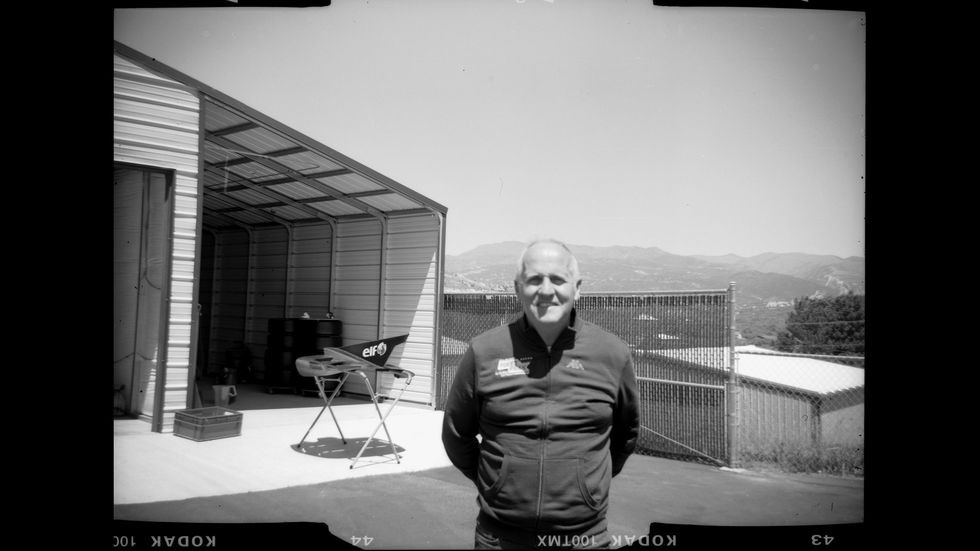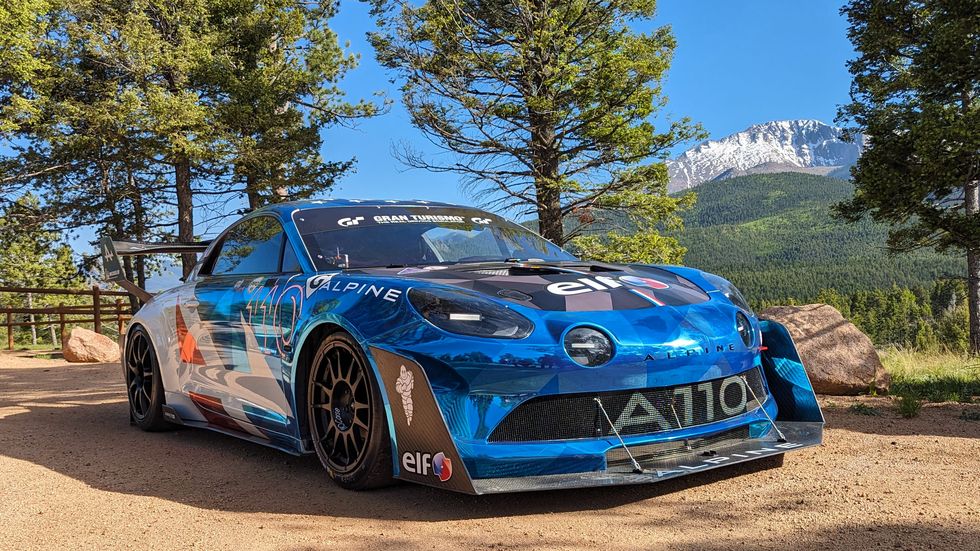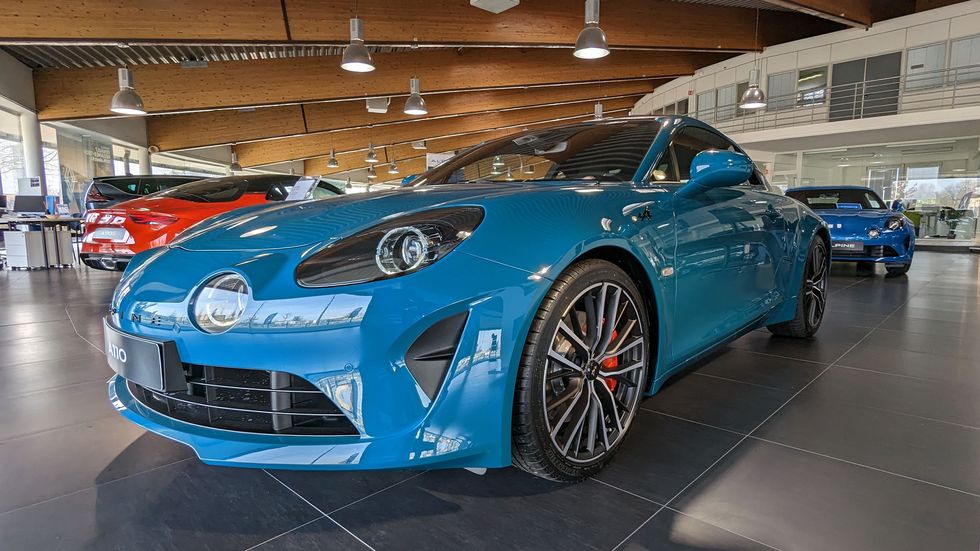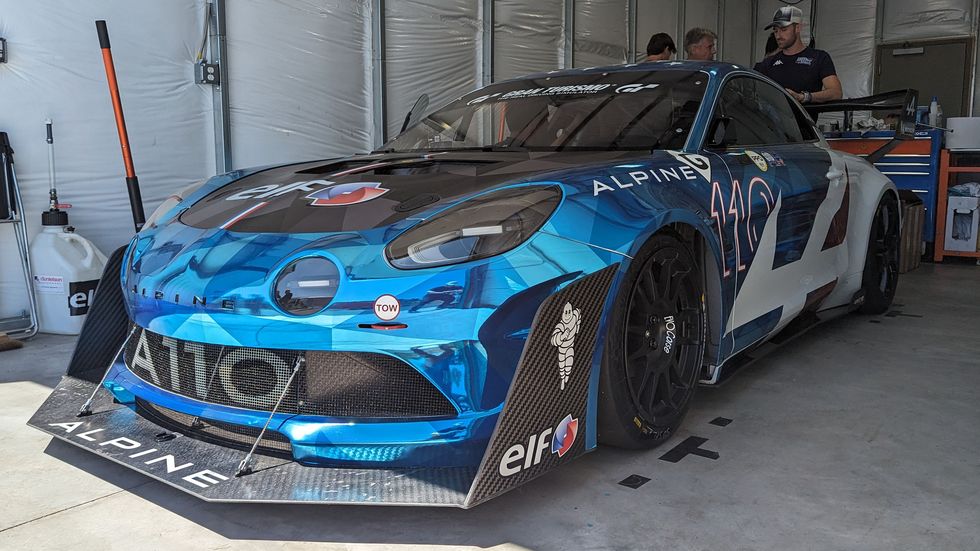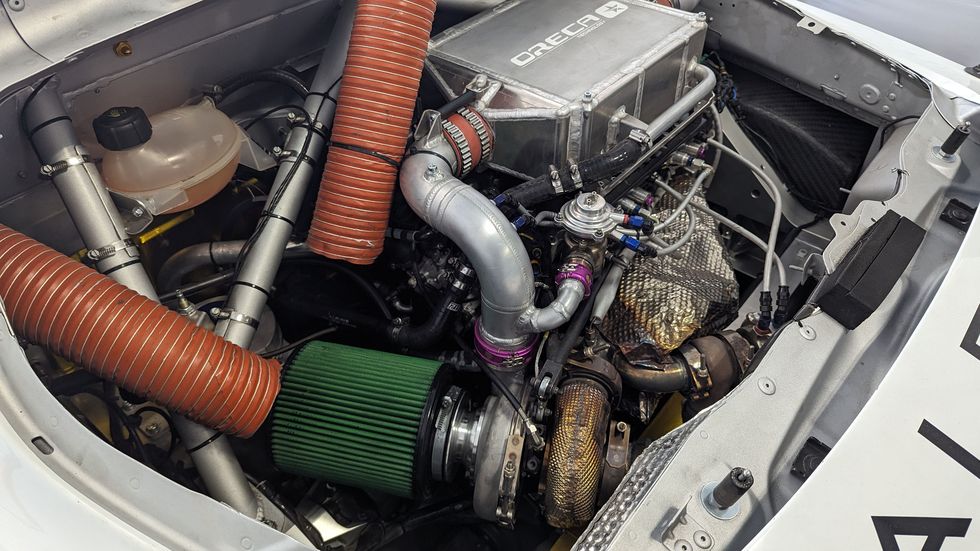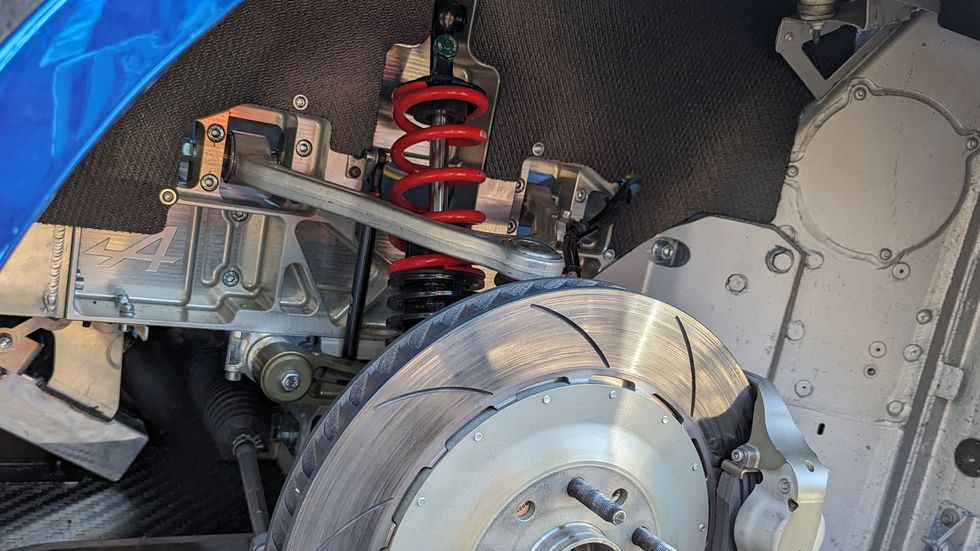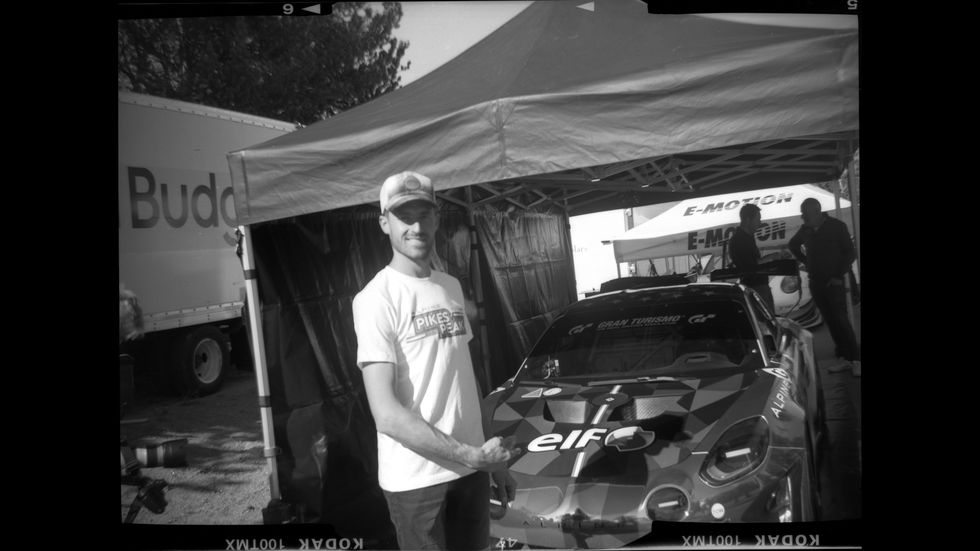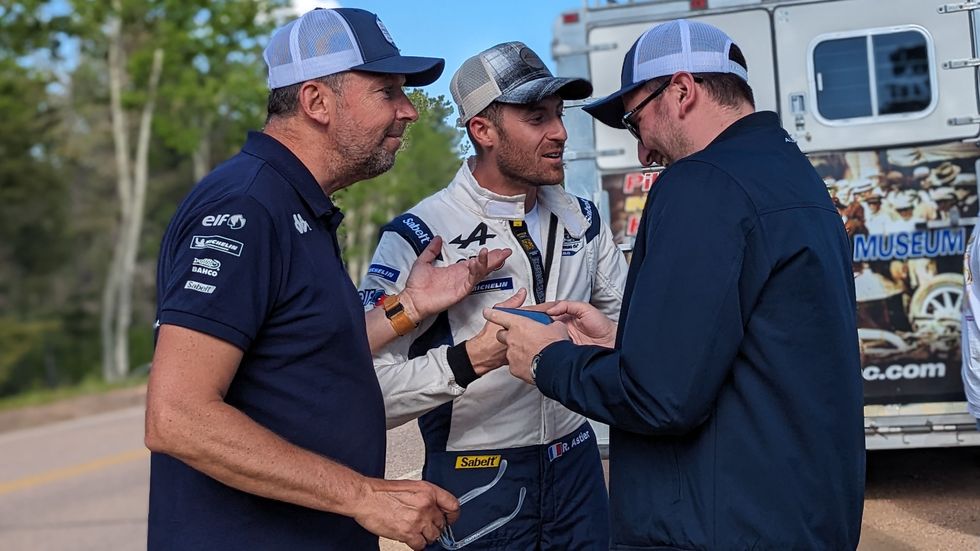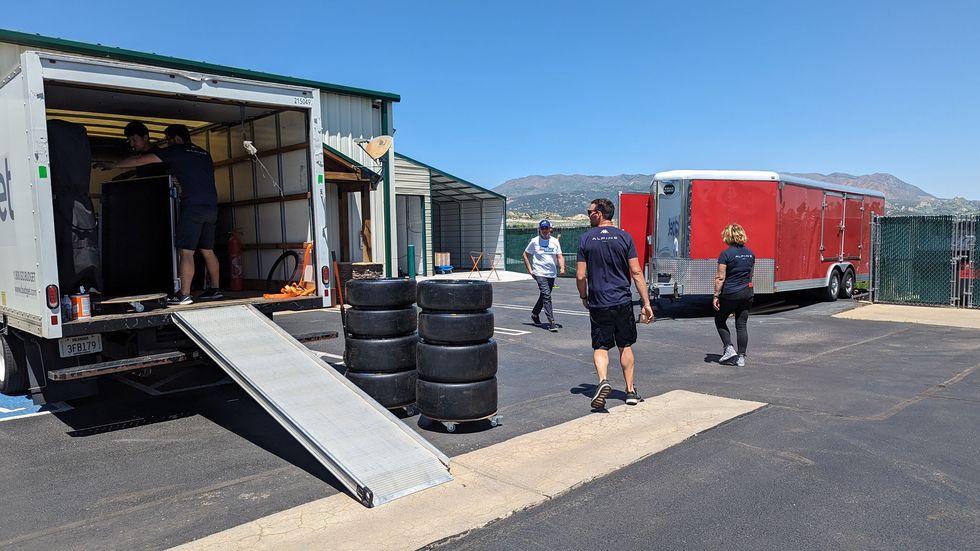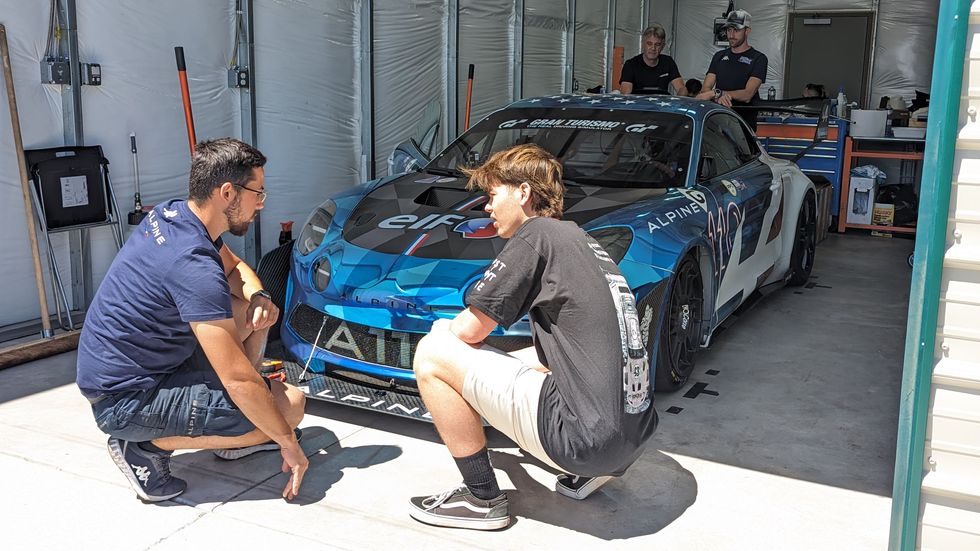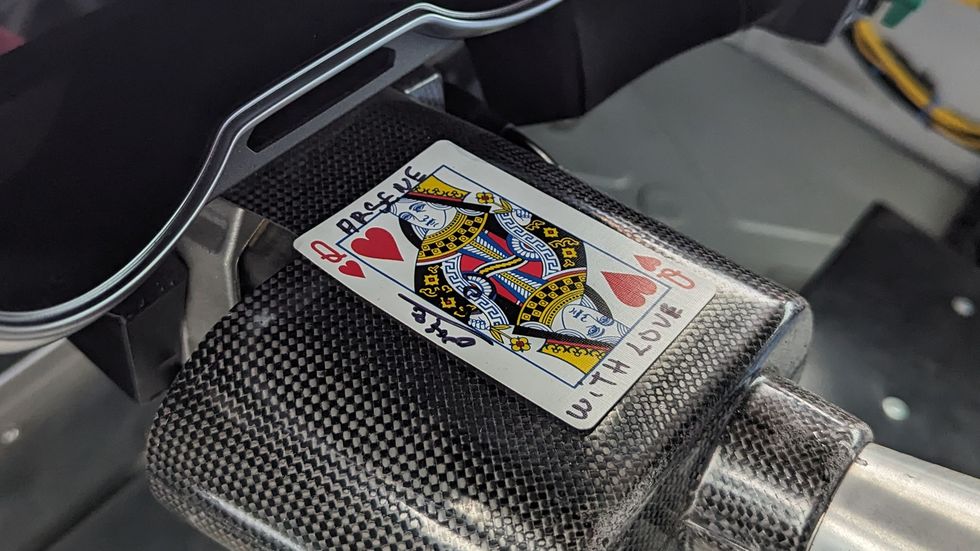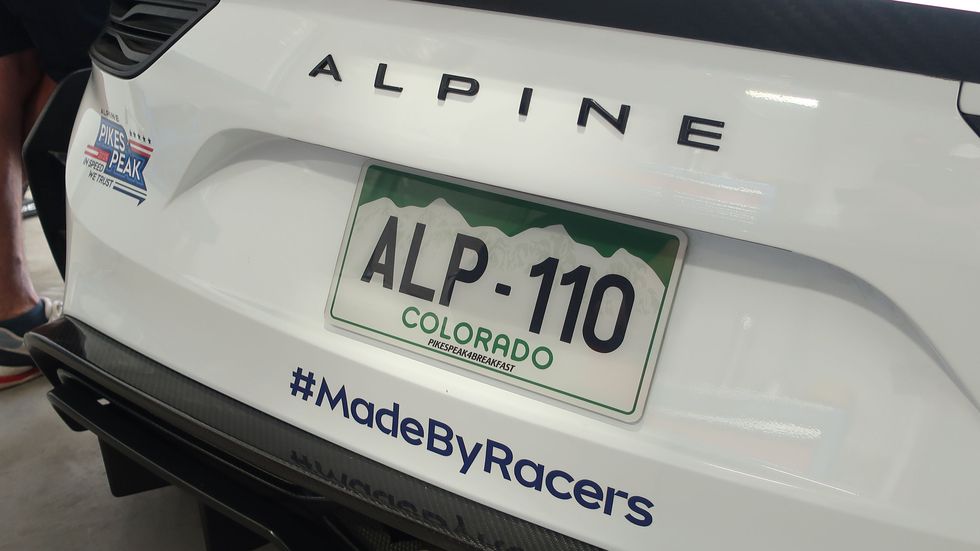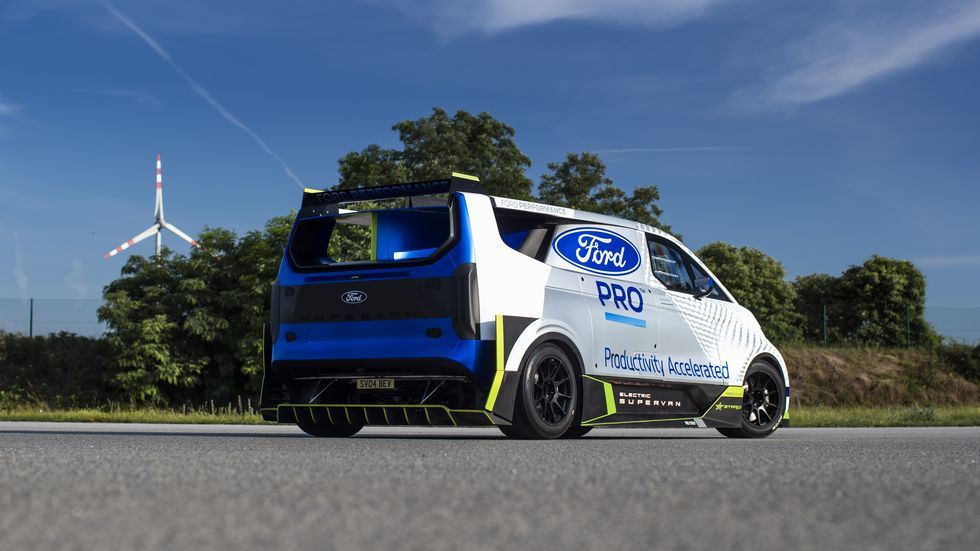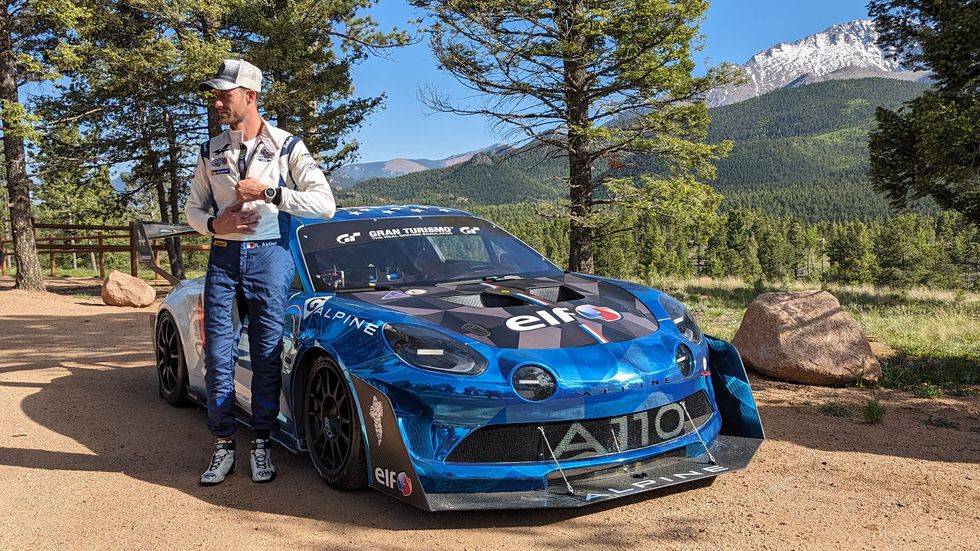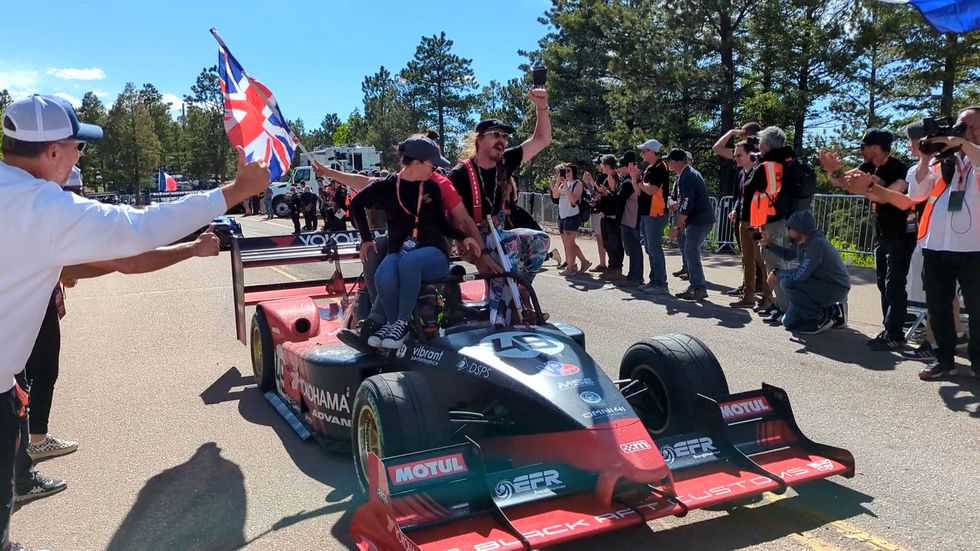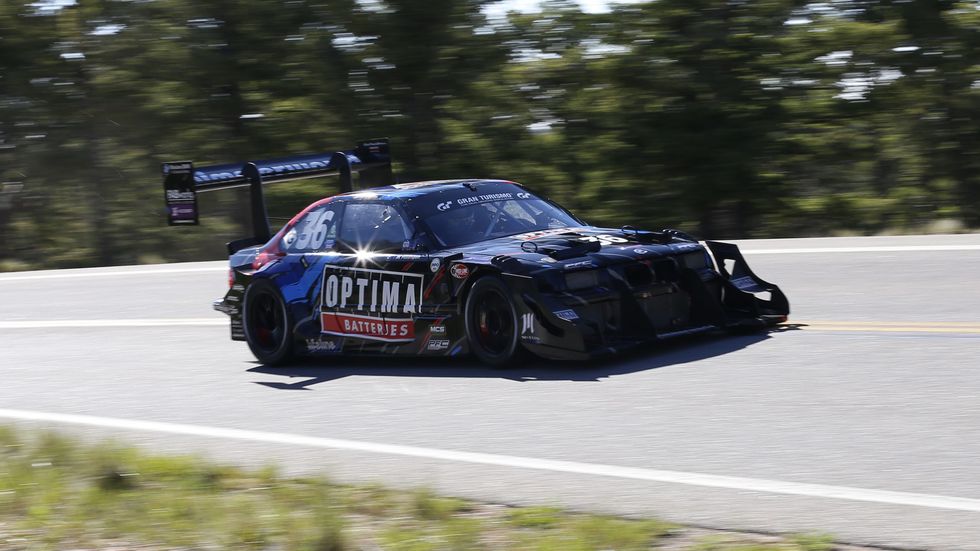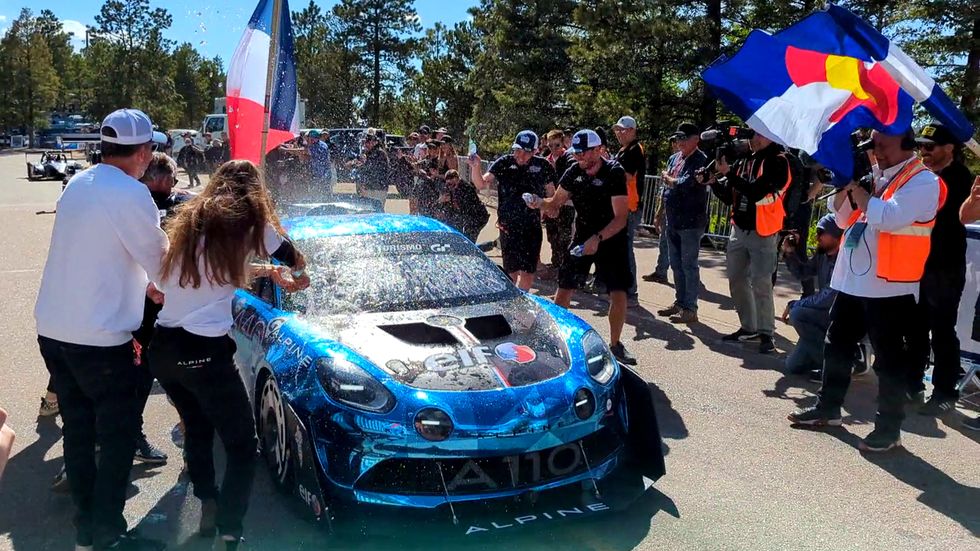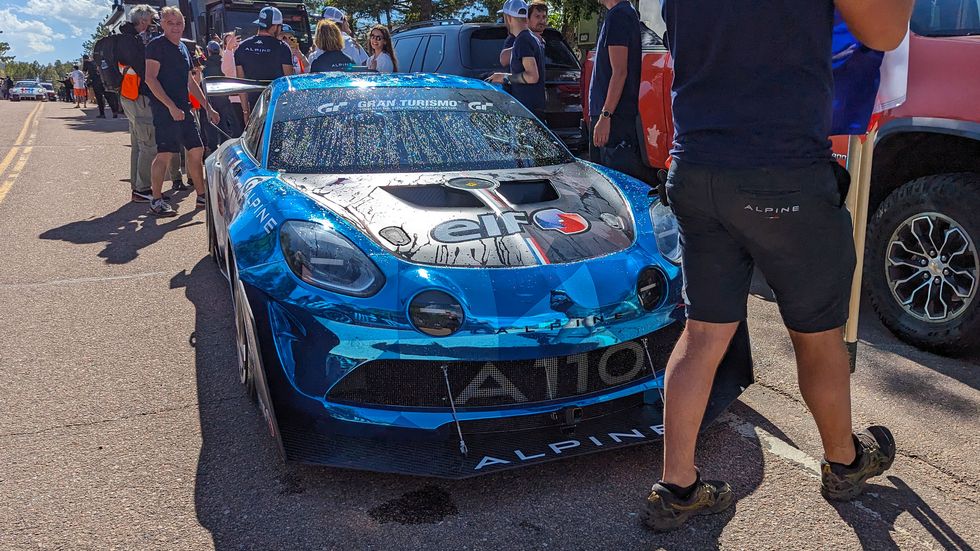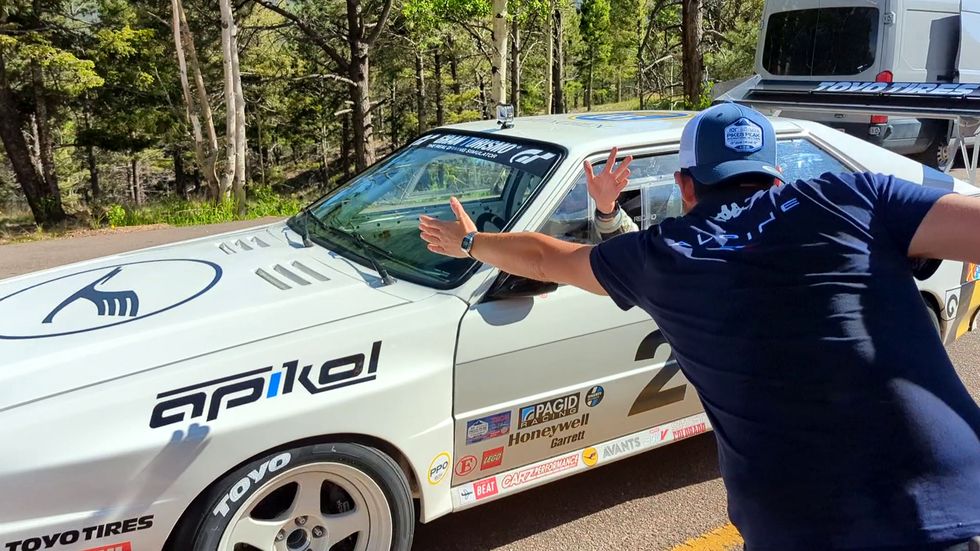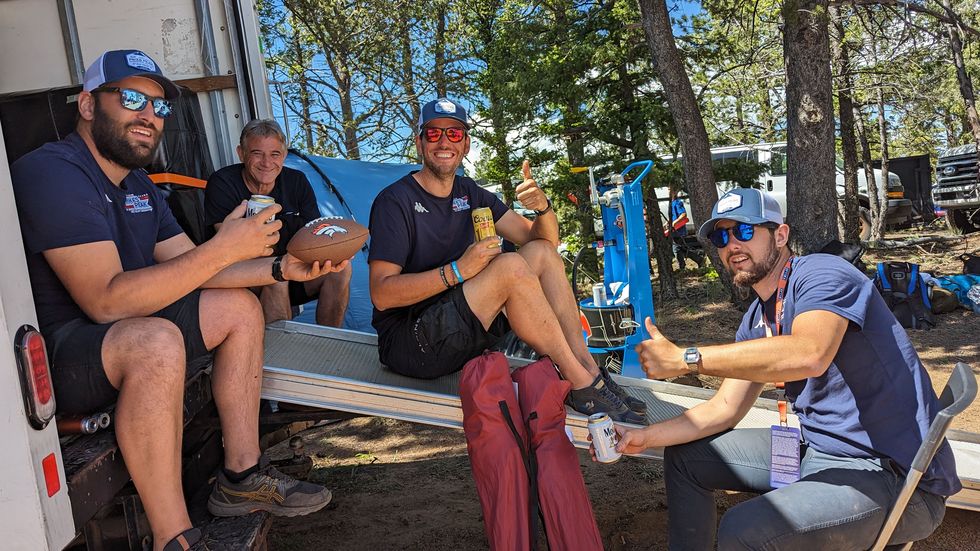After Renault revived the Alpine brand and began European sales of the A110 in 2017, it went without saying that the new car bearing such a legendary name would be a serious rally and road-course competitor right away.
This content is imported from youTube. You may be able to find the same content in another format, or you may be able to find more information, at their web site.
The original Alpine A110, which was built around Renault R8 (and, later, Renault 16) running gear, won plenty of rally events in Europe during the early 1970s, and it was available new in the United States. According to Renault, we’ll be able to buy new electron-fueled A110s in 2027.
Alpine (which became Alpine-Renault after Renault bought the company in 1971) never ran a car at the Pikes Peak Hill Climb race, and so the company’s debut on the legendary mountain course was sufficiently exciting that I decided I should document it. I’d been on the hill when Monster Tajima broke the ten-minute barrier on a partially-paved course in 2011, and again two years later when Sebastien Loeb piloted a Peugeot through the nine-minute barrier, and so I prepared—by buying a vintage French camera: a Parisian-built 1939 Photax.
Alpine partners with Signatech to run its racing efforts, and Signatech principal Philippe Sinault made the decision to bring Alpine to Pikes Peak on very short notice.
This content is imported from youTube. You may be able to find the same content in another format, or you may be able to find more information, at their web site.
How short? Last year, Sinault couldn’t sleep one night while he was in Spain for LMP testing, turned on the TV, saw live coverage of the 2022 Pikes Peak race, and that was it.
Moving with blinding speed for this sort of thing, Alpine Racing started building the Pikes Peak car in the late fall of 2022. It began life as an A110 GT4 Evo but now looks even more beautiful than that car.
I dropped by the Renault-Alpine-Dacia dealership in Luxembourg City a few months ago, as one does, and I can say that even the ordinary A110 and A110S look amazing in person.
The Pikes Peak car remains fairly similar to its street siblings. It retains the aluminum bodywork, to which plenty of carbon-fiber aerodynamics-enhancing hardware has been affixed. Total weight is about 950 kilograms, or just under 2100 pounds.
The engine is based on the block of the Renault/Nissan-derived 1.8-liter straight-four used in the street A110, and it makes “almost 500” horsepower with the aid of about 1.5 bar (22 psi) of turbo boost.
The suspension uses aluminum control arms, which work fine with a lightweight, mid-engined race car with rear-wheel drive.
The driver had to be French, of course, and Alpine chose four-time Pikes Peak veteran and 2022 FIA R-GT champ Raphaël Astier for the job.
Astier appeared to be the calmest man on the mountain every time I saw him, seemingly confident that the tiniest details of the car were set up exactly to his liking. This was striking, given that the entire project had been thought up during a bout of insomnia less than a year before and work on the car had started months after that.
The entire Alpine Pikes Peak operation was quite small for a factory-backed effort. Everything was handled by about a dozen people, a microscopic rented garage in Colorado Springs, a pair of Budget trucks and a flatbed trailer.
Nothing important broke during practice and everything appeared ready a full day before the car had to be towed up to the starting line. The utter lack of nerves or even a sense of urgency seemed more like what you’d see among a bunch of guys getting ready to head out to show off their latest project at the local Cars & Coffee than a first-time team at one of the toughest events in all of motorsports. Their serenity was astounding.
Perhaps that was due to the influence of the lucky queen of hearts, signed by the mysterious Arsene, stuck to the steering column.
It appears that the influence of Colorado, particularly the notably openhearted Colorado racer culture, was a factor in their relaxed attitude as well. The all-French crew—some of whom spoke little English—arrived in Colorado Springs two weeks before the race and spent time hanging out with local racing folks and taking road trips around the Centennial State. By race day, they were well-equipped with Colorado flags, cases of Coors and Denver Broncos gear.
Astier had piloted the car to the fourth starting spot during qualifying, with the Alpine’s two most intimidating rivals in the first and second spots. In order for Astier to become King of the Mountain, he’d have to beat the Englishman Robin Shute (winner of three of the previous four Pikes Peak races) and fellow Frenchman Romain Dumas (four-time PPIHC winner and the owner of the all-time best Pikes time of 7:57).
Shute is a seemingly unbeatable privateer in a Honda-powered 2018 Wolf TSC-FS straight outta Crazy Town, while Dumas had been hired by Ford to drive the terrifying Ford Super Van 4 Electric. This Ford Transit-influenced creature (pictured above) has 1973 all-electric horsepower, first-class factory support, and the fastest Pikes Peak driver in the world behind the wheel, nothing to worry about!
The Alpine bunch understood that getting past Shute and Dumas was possible but not very likely, and they spoke with impressive (for racers) humility that, bon sang, they’d get out there and do their best. Still, you never know what will happen once the green flag waves. For the fans, any Alpine time under 10 minutes would be an awe-inspiring accomplishment—and it certainly wouldn’t hurt car sales on the other side of the Atlantic.
As it worked out, Robin Shute nailed down the best time (8:40.08) to grab King of the Mountain 2023 honors for the fourth time in five years.
This content is imported from youTube. You may be able to find the same content in another format, or you may be able to find more information, at their web site.
Keep in mind that Shute claimed that track conditions weren’t ideal, and that the car wasn’t set up quite right (apparently he went “a little too big” with the turbochargers) when he did this drive. How can anyone ever beat this guy up Zebulon’s mountain?
I’ll need to get to know the Sendy Club folks before my next trip to the PPIHC, because these race loons certainly know how to celebrate a win.
Dumas and the Super Van 4 Electric ran 8:47:682, then third starter James Clay and his BMW M3 (pictured above) went up the mountain in 9:20.433. After that, it was Astier’s turn. The weather was perfect, though the tarmac was still cold.
Astier zoomed up the mountain in smooth, low-drama fashion and knocked off a very impressive 9:17.412 time (I heard that 9:17 was the exact time predicted by the Alpine crew using simulation software, but that story came after the race and I remain skeptical despite their obvious coldblooded competence). The crew plus every other French citizen among the spectators plus a bunch of new American Alpine converts mobbed the car in celebration when the racers paraded back down the hill, the tricolores and Colorado flags waving and Colorado Cool-Aid spraying.
How many race cars hold together perfectly in their very first trial by fire? This one did.
This content is imported from youTube. You may be able to find the same content in another format, or you may be able to find more information, at their web site.
Here’s the singing of La Marseillaise by some of the Alpine crew. This should have been followed up by the Colorado anthem, but nobody knew it.
The Alpine squad showed admirable sportsmanship, well beyond even the normal high level of racing camaraderie you see at the PPIHC. Many of them broke off their own celebration quickly, so they could high-five all the other drivers on their way to the pits.
Welcome to colorful Colorado! I think they’ll be back. In case you’d like to read the official Alpine press release on the Pikes Peak effort, here it is.
Read the full article here



